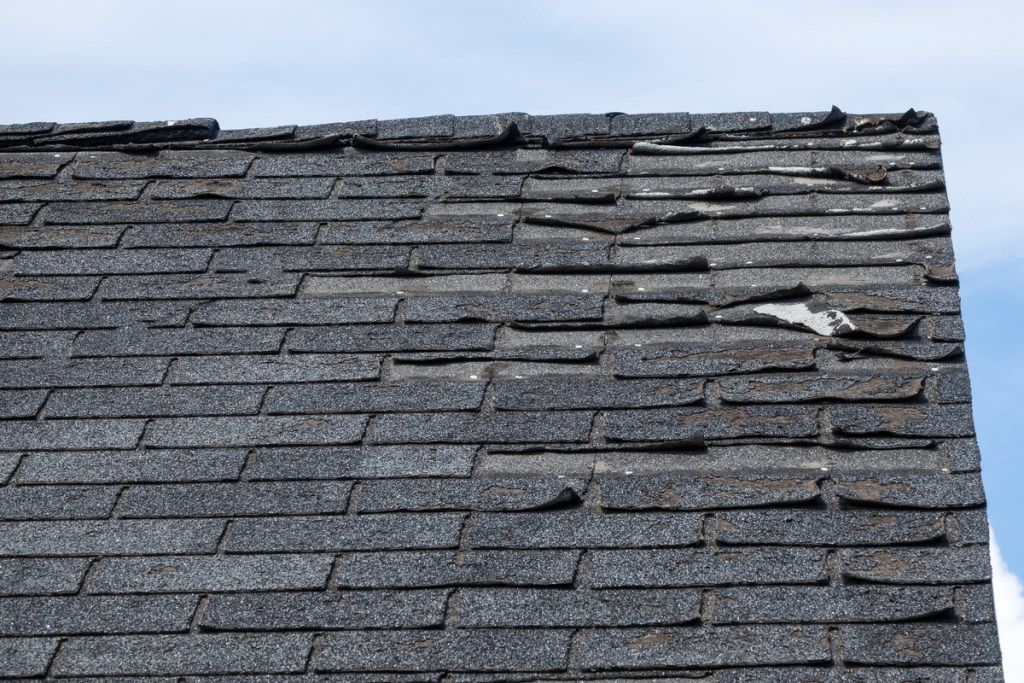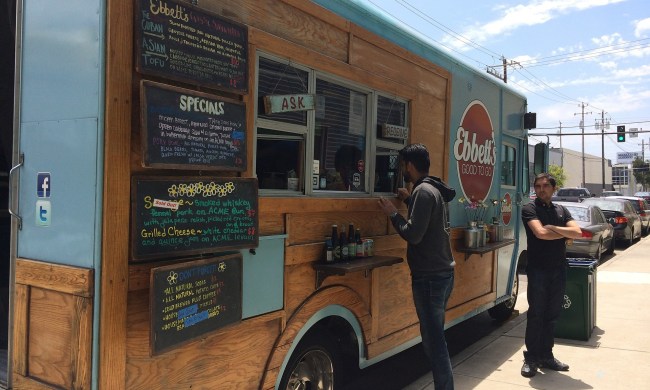A well-built, reliable roof is essential for any home. A leaky roof can lead to all sorts of structural damage within your house. If that’s not reason enough to make sure your roof is up to par, continuous water damage from a leaky roof can lead to dreaded black mold in your home. Black mold is toxic, and besides being highly problematic to your health, it renders your home virtually unsellable until it’s remedied. Removing black mold can be as costly as a new roof, so it makes sense to keep up with your roof’s maintenance and replacement.
A new roof is a significant investment, and we’ll help you figure out how much your roof replacement will cost you. Before we dive into how much a new roof costs, here are some signs that you need a roof replacement.

What are the signs of a bad roof?
Not many people can tell if they need a new roof by looking at it from the outside. There are many interior and exterior “tells” that you might have to search for to know if you need to replace your roof. If you have a regular asphalt shingle roof that’s over 20 years old, you can plan on getting it replaced. Another sign that you might need a new roof is if your heating and cooling bills are significantly higher than usual, barring nothing else has changed.
Exterior signs you need a new roof
- Missing, cracked, or warped shingles
- Loose or rusted flashings
- Hail or falling tree limb damage
- Mold where the roof and exterior wall meet
- Moss or algae growth on or in between shingles
- Dark spots on the roof
- Granules of shingle asphalt accumulation in gutters
- Visible sagging
- Mold on exterior walls
Interior signs you need a new roof
- Ceiling stains
- Moisture accumulation around bathroom fans or other ventilation
- Moldy/musty smell in the attic
- Visible leaks or light showing through the roof
- Water damage in the attic
How do I estimate the cost of a new roof?
You’re probably wondering, “How much does a new roof cost?” The answer to that question isn’t as simple as it might sound. Many factors affect the cost of a new roof. However, the two most significant factors that determine the price of a roof are the materials and the labor.
Materials
When you choose to replace your roof, you should know that there are many types of materials to choose from. You could select a typical asphalt roof or decide to upgrade to a metal or slate roof. For the sake of this article, we’ll stick to asphalt roofing, since it’s the most common choice and the most affordable.
Asphalt shingles, like anything, vary in price by brand. It can cost anywhere between $75 and $240 to reshingle 100 square feet of roof. So depending on the square footage of your home, you can do the math. An 1,800 square foot home could range anywhere from $1,350 to $4,320 in shingles alone.
You also have to consider the underlayment, which could go anywhere from $500 to $1,000. All the other minor materials needed, like flashing kits, adhesives, and nails, can be another few hundred dollars.

Labor
If you’re planning on putting in some sweat equity to your home, you’ll save on a considerable roofing cost: the labor. Unfortunately, not many people have the time or skill to replace their roofs, so they hire a contractor or roofing company.
Many factors can change how much you pay for labor. Whether your home is one or two stories and the overall complexity of the roof and its steepness can all affect the labor calculations. Also, environmental conditions, such as low-hanging trees or power lines can drive up the cost of roof installation.
On average, labor costs for a roof replacement are between $1.50 and $3.65 per square foot. So using the 1,800 square foot home from earlier, labor costs could be anywhere from $2,700 to $6,570. This is generally just for a roof replacement. If there is hidden damage uncovered when they strip the shingles or any other unforeseen repairs, that will drive up both labor and material costs.
How do I avoid paying a new roof deductible?
Typically, deductibles are only involved when you file insurance claims due to damage to the roof that is out of your control as a homeowner. In most instances, insurance companies don’t replace old, worn-out roofs. This falls under routine maintenance of the homeowner. However, it’s crucial to understand your homeowners policy. There could be stipulations in the fine print that can help you pay for your roof through insurance.
If insurance is involved in your new roof, you don’t want to avoid paying the deductible. It should send up red flags if a contractor offers to waive your insurance deductible. According to the Texas Department of Insurance (for example), roofers get over on their clients by giving them an estimate that’s higher than the actual cost of repairing the roof. They then use the extra money paid by the insurance company to cover the client’s deductible. Some contractors might offer rebates or credits in the amount of your deductible, which is also illegal. A legitimate roofer always works with insurance adjusters directly.
Final thoughts
Homeowners want to know exactly how much a roof replacement costs, so contractors don’t overcharge them. Most reputable roofers will give you an estimate that’s as accurate as possible. If you really want to save money, put in the time and effort to install your own roof.



